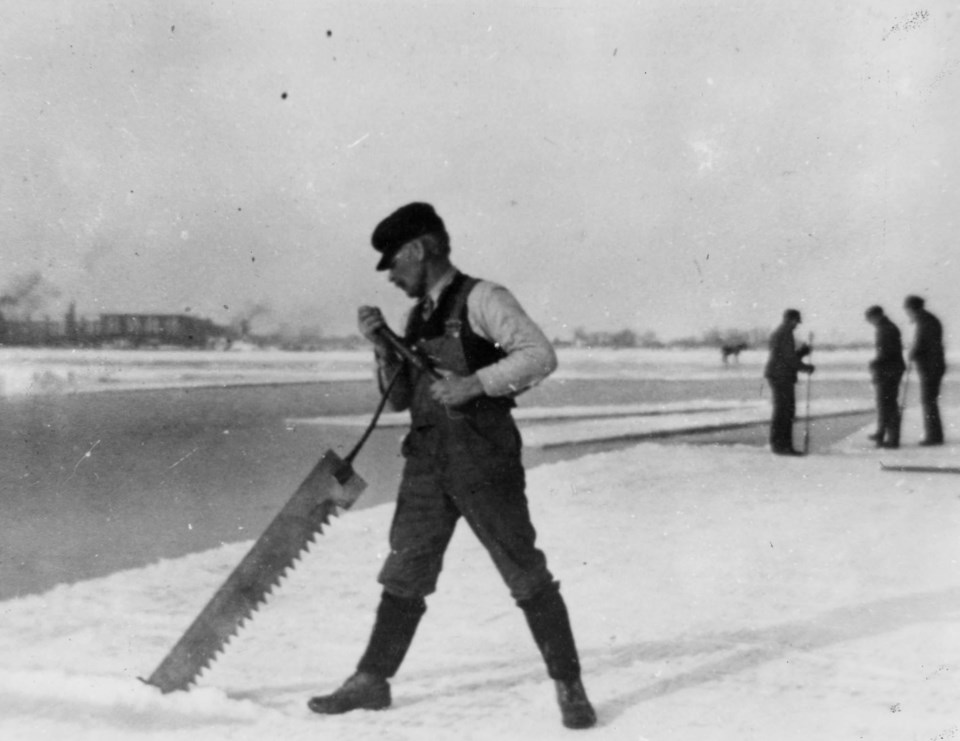Postcard Memories is a series of historic views, stories, and photos of Innisfil and the area, a trip down memory lane on a Saturday morning.
Harvesting ice from Lake Simcoe was once big business, providing winter employment for hundreds of area farmers. Only 70 years have passed since the last blocks were cut from their frozen surface, and yet today this industry is largely forgotten.
In the 19th century the primary method of refrigeration - vital for the operation of restaurants, hotels, and butcheries - came from ice cut from countless northern lakes. At the time, Lake Simcoe ice was widely considered to be the best in North America; tested for purity several times a year, it always achieved a perfect score.
Ice harvesting as an industry began on Lake Simcoe in the 1870s. Rapid shipment to distant markets was important to reduce melting in transit, so harvesting was limited to locations where railways came alongside the shoreline. The principal areas of operation, therefore, included Belle Ewart and Gilford.
Harvesting began once the ice reached 10 inches in thickness which, in a typical year, occurred in late January. It was then a mad dash to bring in the yearly quota before the ice began to melt in March.
The process of harvesting ice began with horses pulling scrapers across the lake’s frozen surface to smooth it. The outlines of blocks were marked out with charcoal briquettes. Originally these blocks were cut manually using hand saws, but eventually, the process became mechanized with saws driven by automobile engines. Blocks typically measured 22 by 32 inches and weighed up to 300 pounds. They were brought to shore via channels cut into the ice, then deposited into warehouses or waiting railcars by way of a conveyor belt. Sawdust, up to a foot thick, insulated the ice to prevent melting.
Starting around 1920, artificial ice began to slowly supplant natural ice. The last commercial ice cut on Lake Simcoe was around 1950.



